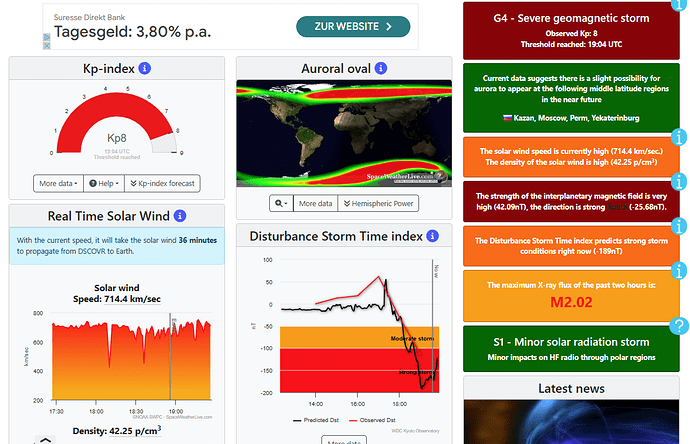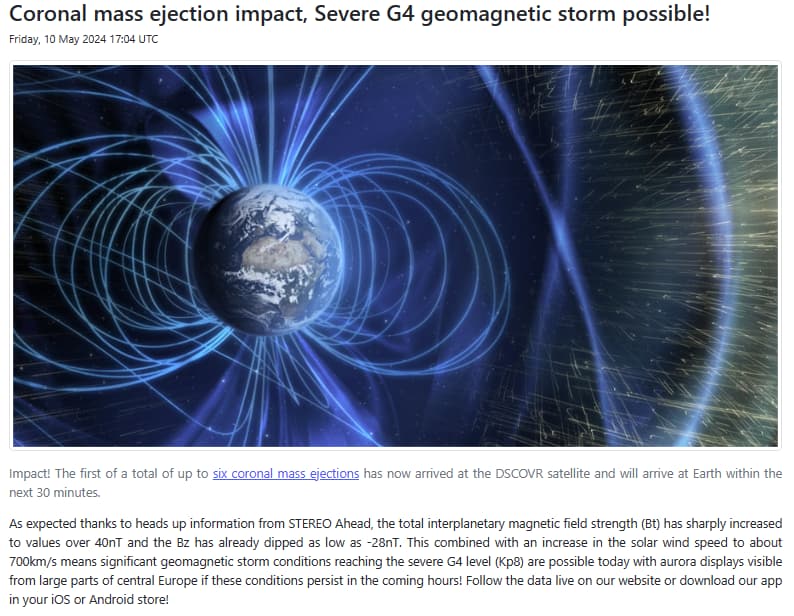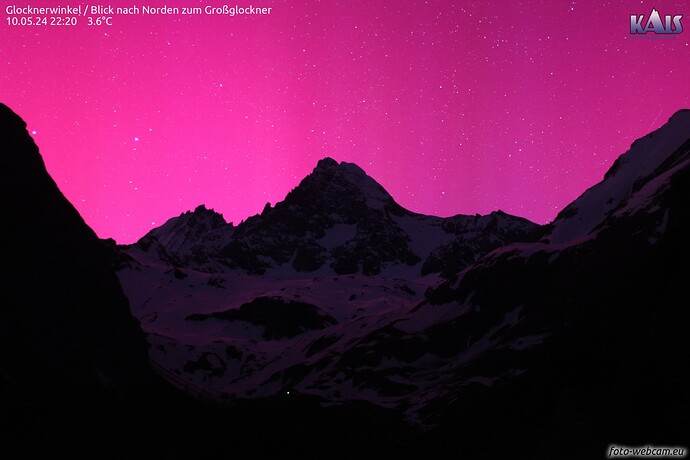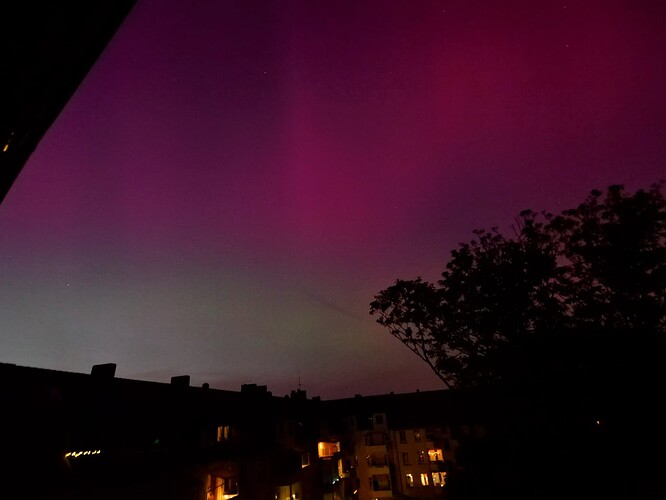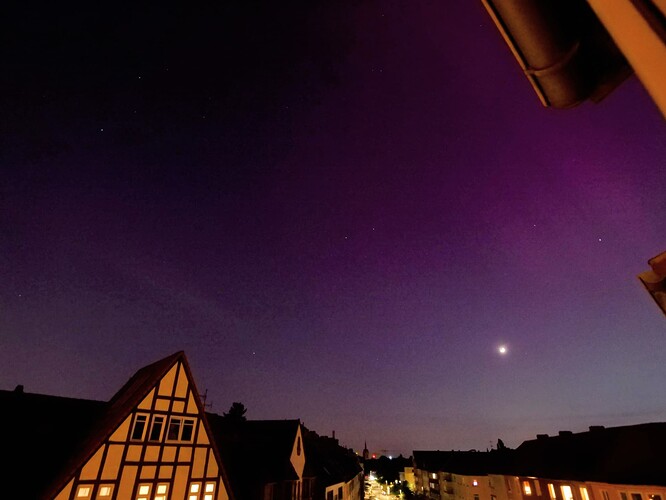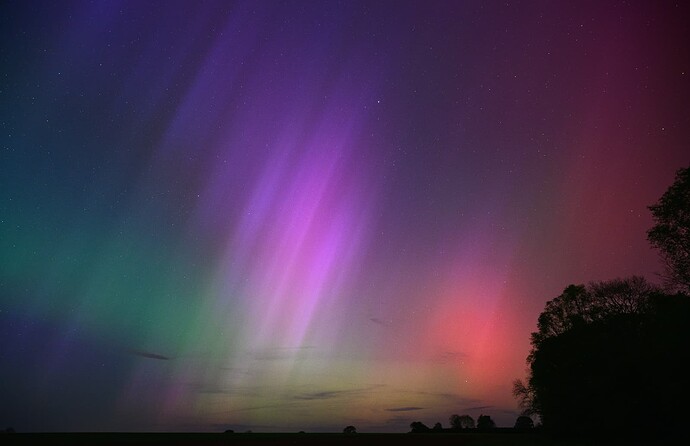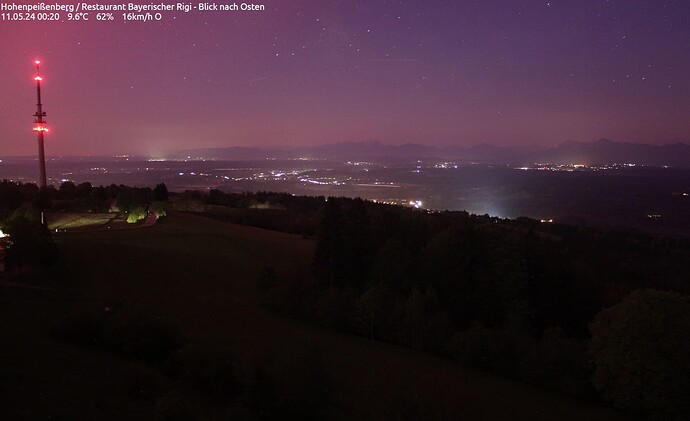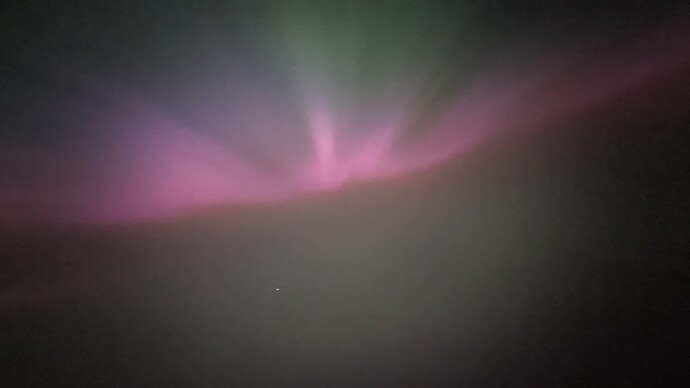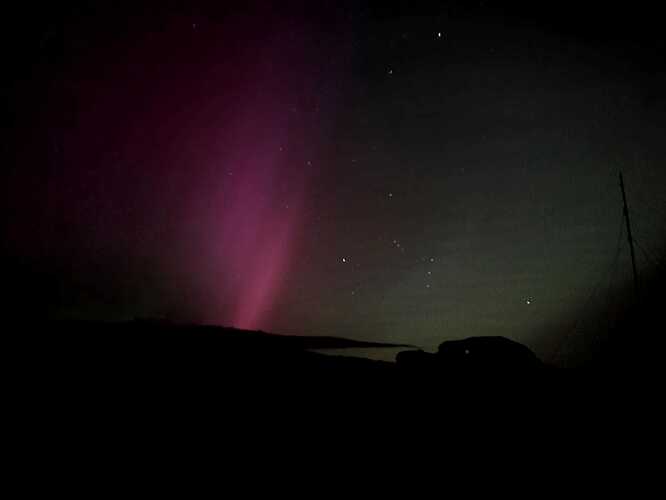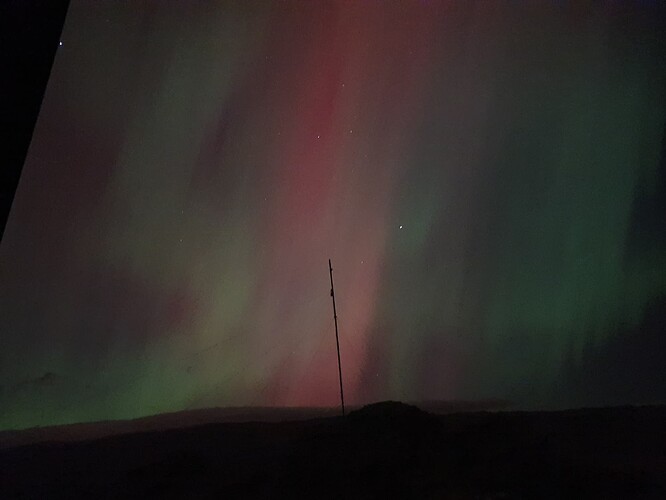NOAA has predicted and now reported the start of a G4 geomagnetic storm. This storm will significantly affect our HF radio propagation, probably mostly adversely, for several days.
We’ll probably see a lot of HF absorption due to auroral activity in the polar regions, as well as QSB and other disruptive effects. CW signals may be modulated and sound weird, and other modes may be affected. It is likely that the aurora may be visible at night, if the geomagnetic storm continues.
There also is an S2 solar radiation event in progress, which usually means additional absorption of HF signals at high latitudes. Not good for SOTA or DX!
The solar flux is very high - 233 - which means the ionosphere is getting a very high level of EUV and X-ray radiation. Levels this high greatly increase the D-layer absorption on longer HF wavelengths - like 40M - but also may enhance propagation on bands with shorter wavelengths, like 10 and 6 meters.
Most of these effects are related to several recent major solar flares. A very large and complex sunspot group (NOAA # 3664) has developed into a formidable active region. This solar feature has plenty of energy and is likely to continue to create more major flares soon.
Please see these links for more details and updates - this is going to be quite a ride:
https://sdo.gsfc.nasa.gov/data/
The SDO site has numerous near-real-time solar images from an orbiting solar observatory. If you select “Data Links”, you can get the higher-resolution images - these have great detail and reveal the complexity of the sun’s outer layers. Many of these images are in the EUV. The plain yellow image called “HMI Intensitygram - Flattened” shows the sunspot Region 3664 - be sure to go to Data Links and magnify the image to see the soul of this monster. This surely is one of sun’s largest spot groups this solar cycle, so far. The span of the group is on the order of 200,000 KM.
The image called “HMI Colorized Magnetogram” reveals the magnetic complexity of Region 3664. Most average sunspot groups are simple bipolar regions - this one is a tangle of strong magnetic fields in the solar plasma. It is growing and changing as I type!
Enjoy the ride - this is solar maximum, like it or not!
73
George
KX0R
